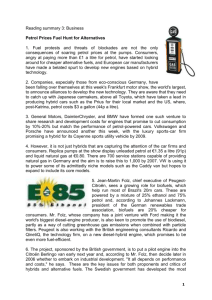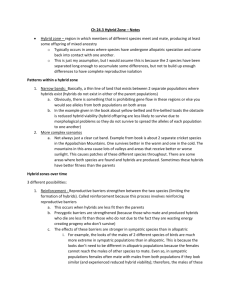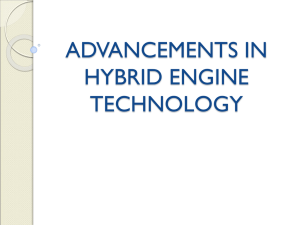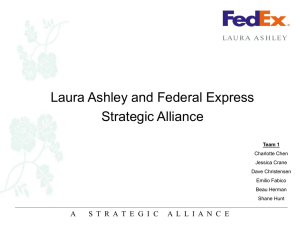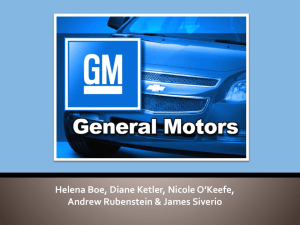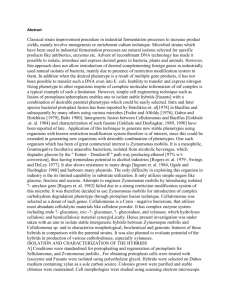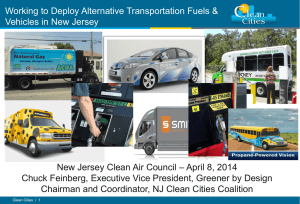Document
advertisement
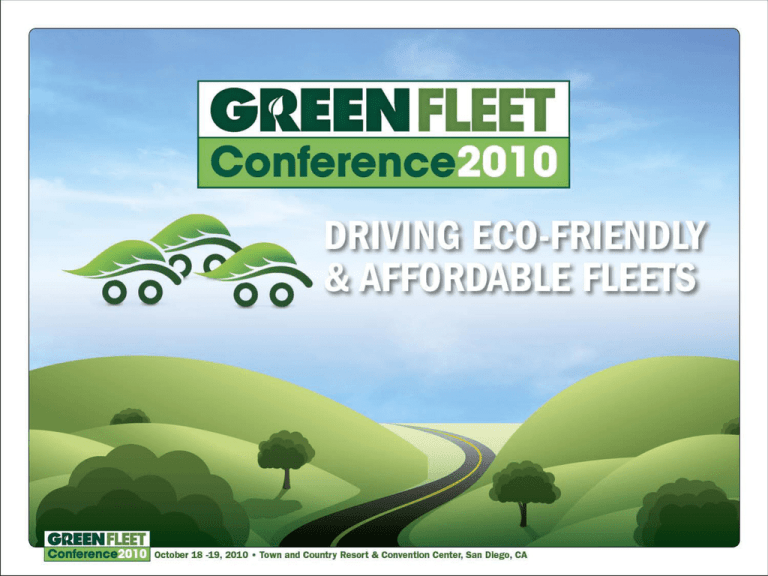
Dennis Beal Vice President Global Vehicles FedEx Express FedEx Alternate Fuel Fleet Goal • Alternative fuel technologies began in 2000 – With the introductions of our hybrids in 2004, we achieved: • 42% improvement in fuel economy • 96% reduction in exhaust emissions – Additional objectives: • Maintain/improve payload capacity, performance, reliability and reparability • Year 2020 goal – 20% improvement in fuel economy by 2020, including California mandates • Expand alternate drivetrain fleet – electric vehicles • Reduce CO2 emissions, maintenance and fuel expense Why FedEx Leads An Alternate Fuel Fleet Mission • Public/Employee safety, efficiency and environmental sustainability • Maintain a leading role in the pursuit of vehicle technology and innovation – Actively participate in industry leadership groups, providing sponsorship and speakers – Promote alternative (hybrids, electric) technology development with manufacturers • Respond to customer requirements in light of CSR goals – Our customers increasingly request sustainability documents – FedEx Environmental Engineering group has developed a carbon footprint tool to be used to provide sustainability information to our customers • Enhance shareholder value by reducing costs – – – – No more than 20% hybrid premium cost 50% fuel economy improvement Pursue options available in all pickup/delivery segments Battery cost reduction Alternate Drivetrain History at FedEx Express 2000 FedEx Express & Environmental Defense begin working together to develop low emission HEV (E700) 2004 FedEx receives EPA Clean Air Excellence Award & Harvard JFK School of Govt Roy Family Award 2007 Agreement w/Azure For 20 gasoline hybrids 2005 FedEx receives CALSTART Blue Sky Award Agreement w/Iveco For 10 Daily hybrids 2009 Hybrids deployed: 92 Repowered W700 hybrids 10 MODEC all-electric Agreement for 51 Azure gasoline hybrids 1 Isuzu hybrid 2000 - 2003 Development & testing of pre-production units 2004 18 Pre-Production FCCC/Eaton hybrids deployed 2006 75 FCCC/Eaton hybrids deployed 2 Isuzu hybrids deployed 2008 Hybrids deployed: - 10 Iveco Daily hybrids 2010 Hybrids and EVs deployed: - 20 Azure Gas hybrids - 2 Hino hybrids - 45 FCCC/Eaton hybrids - 3 Isuzu hybrids - 5 EVs - 4 EVs - 10 M2 hybrids FedEx Express Alternate Drivetrain Fleet • Largest fleet of hybrid electric package delivery trucks – 348 hybrid electric and electric vehicles with over 7 million miles of service to date – Converted traditional diesel trucks by retrofitting them with hybrid electric drive trains – Exploring conversion of IC engines to electric • Currently operating a select number of all-electric commercial delivery trucks in London, Paris and Los Angeles From Gas To Electric FedEx Express Alternate Drivetrain Family FCCC/Eaton W700 Isuzu Hybrid Modec/eStar Electric Hino Hybrid Ford/Azure W700 Iveco Hybrid Location of Alternate Drivetrain Vehicles at FedEx Express 348 HEV & EV units in service with over 7 million miles of service to date Ann Arbor 2 Toronto 5 Denver 4 London – 10 Modec (testing) Italy, Fr. & Ger. – 10 Iveco (testing) Chicago 2 Portland 15 Sacramento 9 New York City 143 Wash. DC 3 Tampa 3 San Francisco 28 Los Angeles Metro 91 San Diego 7 Memphis 3 Tokyo – 6 Isuzu (testing) Hong Kong – 2 Hino (testing) FedEx Express Distribution of Fleet by Mileage Band “Metro” All Electric Hybrid Less Than 15K Miles/Yr 15K to 25K Miles/Yr Standard Production Over 25K Miles/Yr Asset Management – More Than Just $$ Saved • Asset management supports sustainability initiatives – Sustainability can be measured not only in MPG but in fuel consumption avoidance • Fuel consumption reduction contributes to emissions avoidance – win-win • Vehicle optimization – Assigning the right truck to the right route reduces fuel consumption and emissions through vehicle optimization • Reduces fuel usage • Reduces emissions • Reduces fuel and maintenance costs Asset Management – Sustainable Equipment Design • Support and implement sustainable equipment design – Place equipment in optimum locations and on optimum routes • Meet/exceed local environmental regulations • Take advantage of local tax incentives • Support future sustainable equipment design projects Electric vehicles
